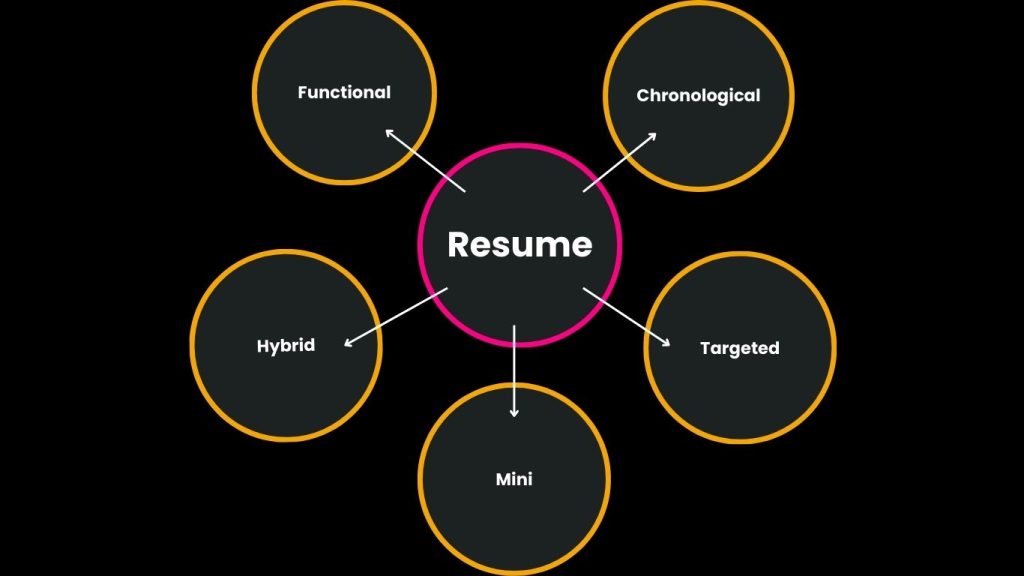Introduction

Have you ever felt that you are not getting any calls? Is it so that no one is paying attention to you? Your job application might be going overlooked. Is it so? You know what, it’s your resume that’s causing you overlooked. Yes! Your resume is your first impression to an employer and it’s your main selling point. If you have to market your skills from the first impression before someone gets to talk to you, you should do your best to make a remarkable impression possible if you write a resume that meets the expectation of Hiring managers. Your resume is like a menu that shows your employer what you sell. It is like targeted pitch that shows how you solve the employer’s problems…
Just like a consumer market where we have a lots of products and numerous brands to choose one, the job market is similar for recruiters. They have tremendous number of needy/personal brands/experts/trainee to choose from. As the market continues to become more competitive, day by day having a CV that stands out is the best way to make sure that the recruiter even takes time to look through it.
Research shows that hiring managers scan your CV very quickly (in approx. 6 seconds), so clarity and relevance are very essential. Hiring managers gets a number of job applications, not 50, 100, 200, it could be even thousands, out of which they aim to search the best. There are always many CVs, and your main aim is to make yours be the best one. A small miss simply a missed opportunity. This means your resume should be strong, well-tailored, up to date, and in accordance to employers’ need.
I will educate you on how to write a resume step by step on how to make you not just land interviews but also get the job. All you need is to focus on your marketing along with things that you already know, skill upgradation, qualifications, degrees, all other jargons. We’ll guide you through each step to help you secure an interview and get hired. Let’s start by looking through the lens of a hiring manager;
Inside a Hiring Manager’s Day
Should we consider an example? A case study? Consider Sarah, is a hiring manager; she starts her day scanning resumes, moves into interviews to understand candidates’ thinking, and spends afternoons reviewing feedback and making decisions.
After receiving a whole lot of CVs within the day Sarah goes through them to identify a candidate that stands out. In addition to that she is also busy managing her schedules and meetings. To manage her workload, she focuses on the CVs that grabs her attention and are well structured.
She is recruiting to find a solution to a specific problem. In your resume, you should clearly show how your results address those problems. That’s too much work, right? Well. Actually they don’t spend much of their time doing this as they don’t care who missed what. Yes, hiring managers just care of their requirement to be filled as fast as possible.
Understanding the hiring manager’s roles and process helps you make a standout resume.
Types of Resumes

Before we get into other things, it is very important that we first go into understanding the types of resumes and how they’re different, different usage and benefits.
1. Chronological Resume
It is the most common type of resume. Most of the resumes written today are chronological resume, for mid-professionals, executives, trainee everyone, it’s widely used to show the history of career. It is mostly used when you are applying for a job within the same industry. This type of resume starts with the job experience, which means that most people who use this type of resume have a variety or at least one experience in the industry they are applying for.
As the name suggests, a chronological resume contains experiences that are listed in reverse chronological order (from today to history). There are several advantages of using this type of resume.
Advantages of this format include;
- It makes it easy for recruiters to see your career progression.
- It shows stability and growth.
Though, there is also a disadvantage of using this resume. When there is an employment gap especially if they aren’t any valid explanations, the employer sees you as incompetent and may lose trust in you. Don’t worry, we’re here to solve this. Employment gaps are not much to be worried about. An explanation, and done.
2. Functional resume
This type of resume is basically focused more on the skills. It is based on what the job seeker can do rather than the experience they have.
This format is often used by people changing careers. People changing careers don’t have much experience in the field, alternatively write a resume that show the skills that can get something extra to the changing industry. It works like an add-on feature. Also, you always need to make sure to sell your skills with examples especially without prior work experience. This creates trust with the hiring manager.
3. Combined or hybrid resume
Combined resume is a blend of both functional and chronological resume. It is enticing to the recruiter since it shows both skills and work history.
Finding a correct balance between the two sides is very necessary and the best approach to stand out. Always make sure that the resume doesn’t neglect either experience or skills side. A hybrid resume can significantly outstand you if properly crafted. You might be wondering how, it’s simple. Suppose you go to the market and see an offer “Buy 1, Get 1 Free”, what would you do? One disadvantage is that a combined resume can get too long. To avoid this, try to avoid any unnecessary details like invalid job experiences and skills.
4. Targeted resume
This is a type of resume that targets a specific job. It is tailored to match the job description to the maximum. It only indicates areas that are related to the job requirements.
A customized resume, can easily pass the ATS keyword searches, which boosts visibility. On the other side it takes time since you have to make one for each job.
5. Mini resume
It’s a condensed version of your resume. It highlights your core skills and encourages the recruiters to reach out.
It is mostly used for LinkedIn profiles, networking events and career fairs. When creating a mini resume, ensure everything concise yet complete.
Tips to Writing a Job winning Resume
There are several sections of a CV. Each section plays a crucial role and helps the hiring manager understand your fit. This is similar to what I wrote earlier. Remember? Market your skills.
1. Header and contact information
This section includes, your name, phone number, email, and (if applicable) LinkedIn. This is the very first section of view. Do not make mistakes here, you can get rejected right away!
Let me explain,
- Suppose you mentioned your e-mail ID, abc.informal@example.com. You’re most likely to get rejected. Your contact details should be as formal as your application. For e.g. abc.personal-branding@example.com or if you’ve a personal website then you can go for abc@example.com. Informal elements even in an email ID cost, it can be birth date, gender, pet names, abstract terms, colour or any other irrelevant terms.
- Your phone number should be in the standard international format (E.164) (+1, +91, +44, etc). Do not add multiple phone numbers, add the most reliable one. If any one number goes unreachable, you may miss an opportunity.
- Do not add pet names along with your formal name.
When writing this, you need to strictly ensure that you are using official names, official email addresses, and a working phone number.
You can add links to your website or portfolio if you have one. The goal of this section is to make it easy for recruiters to reach you.
2. Personal Bio (About me section)
This is the section where you tell your potential recruiters what you can do and who you are. There are few things that are necessary in making an impressive bio. This is one of the most important section to be taken care of while writing your resume as a hiring manager gets through key highlights in your resume and search for some eye grabbing points. This section also gives a brief information about your communication skills.
- Start with a brief summary of who you are, and what you do. This includes your profession and relevant experience for the role you are applying for. If you don’t have the experience, always make sure to show your willingness to learn and explore new possibilities.
- Secondly list your skills and explain the addition they bring to the organization. Always strive to show the recruiters the value you will bring to their organization. Do this by using measurable results instead of buzzwords to demonstrate your skills. Measurable results mean 25% increase in revenue, 10% increase in net profit, 40% increase in conversions, etc. This leads to the next step.
- Describe your skills in detailed information. Instead of using something like project management give an example of a project you managed and how it turned out, i.e. I successfully led cross-functional teams to deliver projects on time and under budget, driving efficiency and improving client satisfaction.
- Lastly finish by expressing your interest in the position. Use this chance to state the additions you will add to the team and your willingness. Don’t undersell yourself; confident, evidence-based statements build recruiter’s confidence. Avoid being overly persistent, as it can come off as desperate – a turnoff for most hiring managers.
3. Career/work experience section
In this section you show what you have done and your past work history. You should always note if your experience is related to your academic qualification. If you have pursued a different path from your degree, but the path you have pursued is related to the role you are applying for, always make sure to note that.
If your work experience relates to your degree, always make sure to note that, too. Listing irreverent experiences doesn’t add anything to your resume, because that is not what your hiring manager is looking for. I.e. if you are a teacher and you are applying for a researcher role but have an experience as a teacher – frame transferable skills rather that discarding the experience.
The recruiter maybe looking for the same academic qualification but different experience. In this case it is always wise to show how you can use the skills gained in the different field in your new role.
The order of the career section is as follows;
- Write the title of the position.
- Naming the company and location.
- Dates of employment.
- Key achievements and responsibilities’
Include relevant volunteer work as well.
4. Academic qualifications
This section is crucial, especially if a degree is a key requirement. Even if a degree isn’t required, listing your education is still important.
Exclude early education (e.g. primary school), focus on relevant, high-level qualifications. When indicating the academic qualifications, you should follow a certain order;
- The name of the degree/qualification.
- Institution name and location.
- Years attended followed by the graduation year. (The time length of the degree).
- The achievement or the honors achieved (you can always write or leave it).
Apart from the major and main qualification, when you write a resume targeted to specific job positions it is also good to write the other courses you have done that are aligned with the role you are applying for i.e. online courses or workshops. Use chorological order, starting with the most recent.
5. Skills and competencies
List the skills that aligns with the job description. Always focus on the skills that are applicable to the specific job opening. Adding unrelated skills doesn’t add value for the recruiter.
Use keywords that were used in the job post and aligns with ATS. Always ensure to maintain a balance of both hard and soft skills.
When you have a relevant examples for a skill, it’s advisable to include them. This shows the hiring manager that you not just claiming the skill – you’ve demonstrated it.
What not to do when writing a resume
- Avoid using too much graphics in your resume. Complex graphics can be misinterpreted by some ATS software. If the use of graphic is necessary, use light graphics. Use a clean layout with text-based sections for reliability
- Avoid making grammar and spelling mistakes. They interfere with your proficiency.
- Keep your resume concise, to avoid unnecessary length.
- Avoid using too much personal information.
- Salary expectations and references should also be removed from your resume, unless they are requested.
You may also want to read: How Long Should a Job Interview Last?
The Bottom Line
That’s it! You have come along a lot of statements. All these make your resume wonderful. Your resume should be your selling tool that acts as a focused proof of fit – showing how you’re ready to deliver results in this role. A strong resume makes a great impression, and increases your chances of getting an interview, which is the first step of getting the job.
Have you ever experienced that everything is fine but still no result? That’s common and expected if your first impression not speaks. All these guidelines make your resume tend to perfection but not the best. There’re much more (trends, research, expectations, standards, etc) that I’ll cover in my next articles.
All what you can take in primary stage have been outlined in this blog. Lastly I would like to remind, when making your resume make sure it highlights your strengths, showcases your achievements, and positions you as the right candidate for the role. By being intentional about the key areas, you create a resume that advocates for you. Always keep in mind that, there is no universal resume. Tailor your resume to fit the specific role you are applying for.
Conclusively, your resume should be clear, and should tell a narrative that aligns with your job. This ends up creating opportunities for roles that match your skills and goals.
